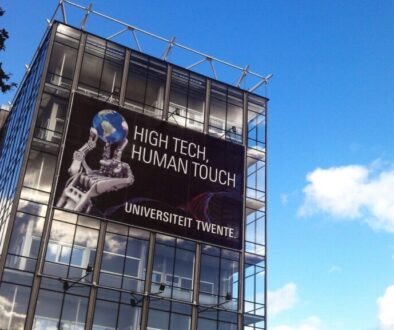The ability to anticipate the future is unfairly distributed
Last week I participated in the Anticipation Conference at the University of Lancaster. Four days of scientists from around the world gathered together, all engaged in exploring futures and designing possible futures. I learned about multiple dots on the same horizon, about traveling around the future in 80 worlds, and about radical imagination. But I was most struck by a comment made by Arne Rieber, a researcher at the University of Bonn. He talked about the “economy of anticipation” and how in that economy the capacity to anticipate the future is unevenly distributed. It got me thinking.
Economy of anticipation
The capacity to anticipate is important. It allows you to take action now so that the future can look better for you. Getting a grip on your life starts with getting a grip on your future. Leonardo da Vinci already made it clear in the 15th century how important the ability to anticipate is. In my work studio, the following quote of his hangs on the wall as “tile wisdom”: “Not to anticipate is already to moan. In other words, when you are unable to anticipate a possible situation, you are only able to moan about the consequences of that situation.
Someone who can anticipate well takes an umbrella as a result of a weather forecast in which a lot of rain is predicted. Someone who cannot anticipate well grumbles about the bad weather when it actually rains. The capacity to anticipate enables you to act proactively; lacking that capacity causes you to be paralyzed, to wait only passively. Having no capacity to anticipate thus transforms you into a grumbler. The consequence of the unequal distribution of the capacity to anticipate is that some feel they have influence over what happens to them, while others fatefully wait to see what happens to them and contemplate the consequences.
Competitive Advantage
When you as an organization have a high capacity to anticipate, you have a great (competitive) advantage. A good example of this is the rail link between England and Scotland. You may know that Britain pioneered railroads. The first steam train ran in Britain, in a mine to transport coal in 1825, and the world’s first passenger train ran between Liverpool and Manchester (1830). As passenger trains slowly became a reality, it was time to further expand the rail network and connect networks. One such desired connection was between the English network and the emerging Scottish network. There was only one problem: the Lake District. The Lake District is the beautiful part of northern England, on the border with Scotland, that most of us know as a lovely scene from Beatrix Potter’s Pieter Rabbit pictures. Beatrix Potter loved the hilly countryside and it formed her regular scene for her books. But the hills in the Lake District can be treacherously steep, so the area is known for its relatively high peaks and misty and mystical atmosphere.
As for the train connection between England and Scotland, there were two options: the longer option around the Lake District, or the shorter option right through the Lake District. Well, I say two options. George Stephenson, the inventor of the first widely usable steam locomotive and dubbed the “Godfather” of British railroads, saw only one option: the long route around the Lake District. He thought that the steep slopes of the Lake District would be far too steep for train traffic to cross. His protégé Joseph Locke, on the other hand, thought it would be possible to go right through the Lake District. Locke possessed the capacity to anticipate the future. Locke kept a very close eye on the rapid development of steam locomotives and predicted that by the time the construction of the rails was completed, there would be steam locomotives with the power to go over the steep grades, despite the fact that at the time of speaking, this was not yet the case. The management chose Locke’s plan and Locke turned out to be right. Joseph Locke thus had the knowledge as well as the imagination to imagine the technology that did not exist at that time and to adapt his design accordingly.
Unequal distribution
That people differ in their ability to anticipate the future because of many different causes. It has to do with their access to knowledge, but also with the time and space to do something with knowledge. To anticipate the future, you have to have the space to escape the delusion of the day. Then you also need the resources, persuasion, and influence to do something with those insights. Schools are pre-eminently the place to teach young people to anticipate the future. Unfortunately, that still happens far too little. The focus is soon more on the past than the present, let alone the future. When we talk about equal opportunities in education, let it be primarily about equal opportunities to anticipate the future.


